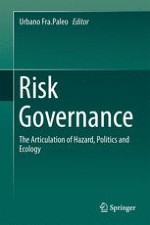2015 | OriginalPaper | Chapter
12. An Evaluation of Risk Management and Emergency Management. Relying on the Concept of Comprehensive Vulnerability Management for an Integrated Perspective
Activate our intelligent search to find suitable subject content or patents.
Select sections of text to find matching patents with Artificial Intelligence. powered by
Select sections of text to find additional relevant content using AI-assisted search. powered by
